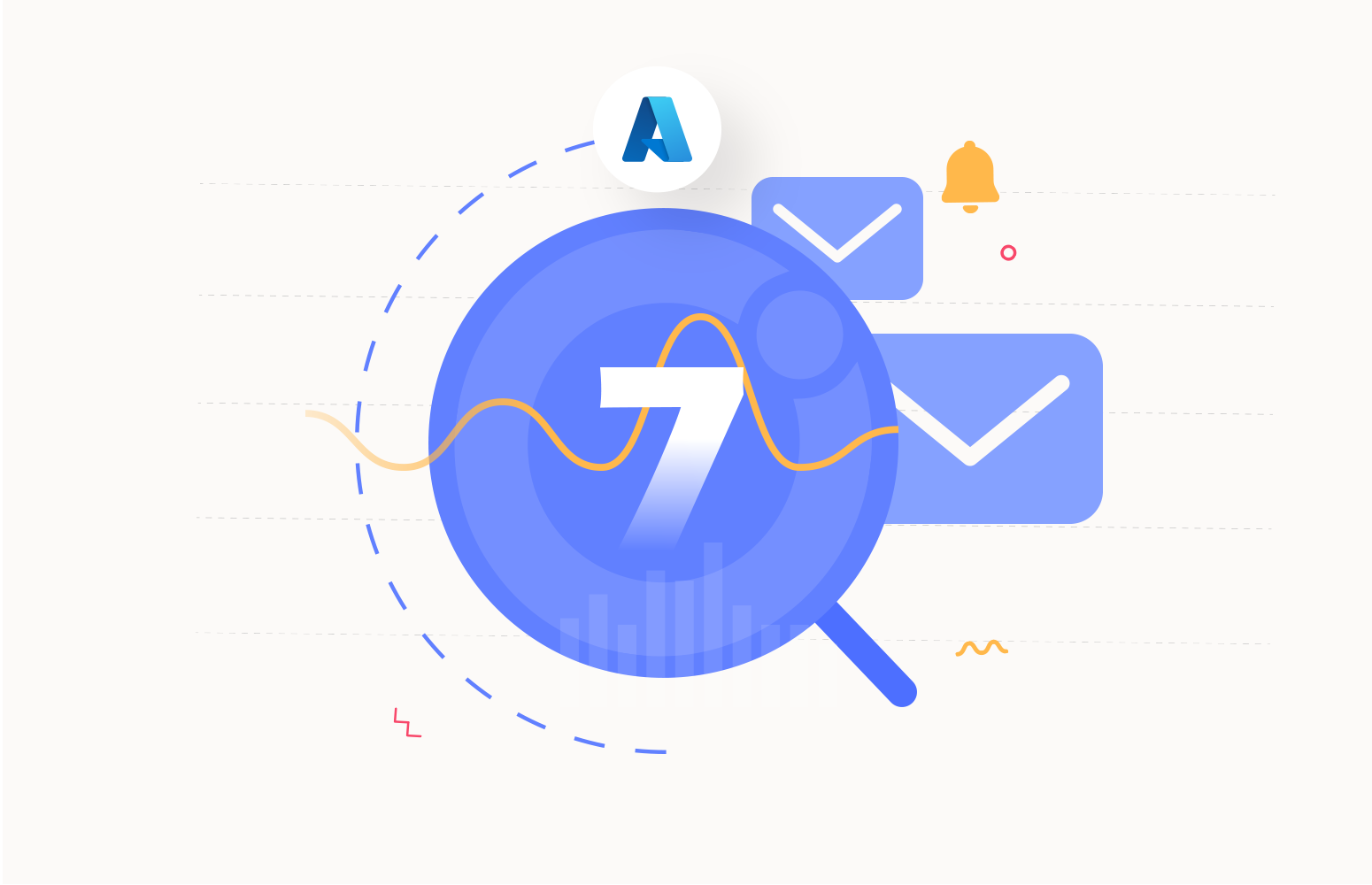Introduction
Azure Virtual Machine (VM) is an on-demand Azure resource allowing users to host applications in a virtual computing environment instead of a physical machine.
Allowing software to be configured and installed in a virtual environment and offering flexibility and scalability lowers the cost of maintaining a physical machine.
This blog discusses the following key aspects:
- Why monitor your Azure Virtual Machines?
- What Should You Look for in Azure VM Monitoring Tool?
- Azure VM Monitoring tools available in the market.
Why monitor your Azure Virtual Machines?
To assess a virtual machine’s overall performance, businesses need a consolidated report on all its metrics. Since an Azure virtual machine functions as a virtual computing environment, monitoring essential metrics that affect the virtual environment, including CPU percentage, disc utilization, and many other factors, is essential.
The key metrics that need to be monitored to optimize and improve the overall performance of a virtual machine include the following:
- Percentage CPU
- Percentage RAM
- Disk space
- Inbound flows
- Outbound flows
- Network in total
- Network out total
Azure VM monitoring tools can help users measure its performance, send out notifications in the event of any rule violations, monitor the CPU, RAM, and Storage use, and track the availability of each virtual machine.
What you should look for in Azure VM Monitoring Tool?
There are plenty of Azure VM monitoring tools available on the market. However, choosing the right solution that meets your business needs takes time and effort.
Here are some key factors to consider before choosing a monitoring solution for Azure Virtual Machines:
- Usability and Design – First impressions matter. The overall user experience, which should be straightforward, is the primary consideration when using a monitoring solution.
- Product Documentation – The technical documentation of software (or) a product plays a vital role in allowing users to use it more extensively because it is usually the most accessible support form.
- Extensibility – Enhancing the core product with new integration services in response to growing business demands.
- Pricing – Software pricing plans usually determine whether users are ready to buy the product.
- Encryption – Encryption of business data is essential since any data exposed to external products could be subject to several vulnerabilities.
- Scalability – Monitoring solutions need to meet business requirements despite increasing application workload.
Top 6 Azure VM Monitoring tools available in the market
Today’s market offers a plethora of VM Monitoring tools. Let’s go over some of them, including their advantages and disadvantages.
1. Turbo360
Turbo360 Azure VM Monitoring Tool is an advanced cloud management platform primarily focusing on managing and monitoring Microsoft Azure Services.
Data visualization, Azure service monitoring, Business Activity Monitoring, Azure document generation, and Azure Cost Optimization are all provided by Turbo360 through various products on a single platform.
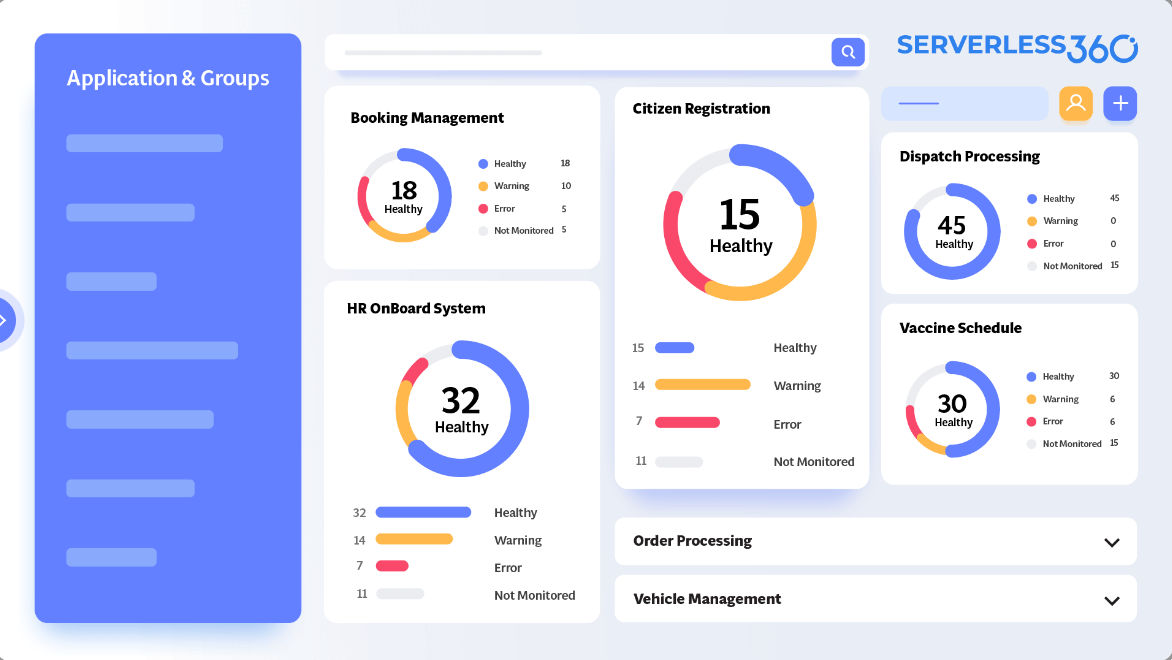
Exciting Features & Advantages
- Monitoring Azure Services in real-time by using numerous notification channels to distribute alert reports.
- Quick technical assistance
- Easy-to-use interface
- Affordable in comparison to its rivals
- Azure services can be monitored and visualized in a centralized manner by grouping them onto a single container like a physical architecture.
Get the 15-day free trial to know more about how to monitor Azure VM with Turbo360.
2. Netreo
As a proactive performance and availability monitoring solution for corporate services and infrastructures, Netreo primarily targets cloud infrastructure monitoring. Users find it simple because it offers all monitoring visualization in one place.
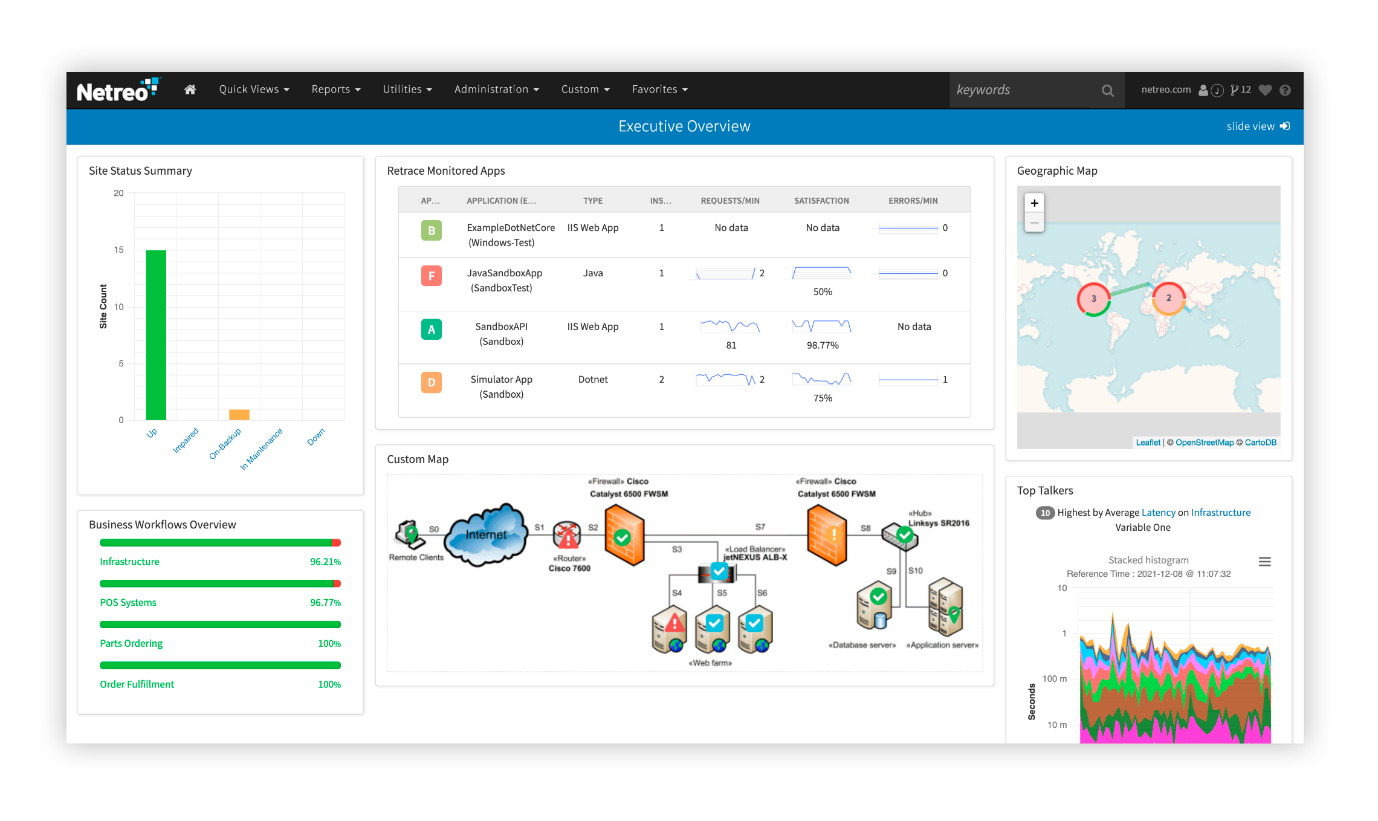
However, given that the single view presents a significant quantity of data in a more complicated manner, the main disadvantage of using such products is that it can be challenging for users to decide where to start by their business requirements.
Additionally, it has been claimed that the overall user interface is not very intuitive.
3. New Relic
New Relic is an observability platform that supports application performance monitoring, assisting businesses in raising the caliber of their software.
The New Relic infrastructure monitoring service integrates with Azure virtual machines to track performance metrics such as size, availability, CPU and RAM utilization, etc.
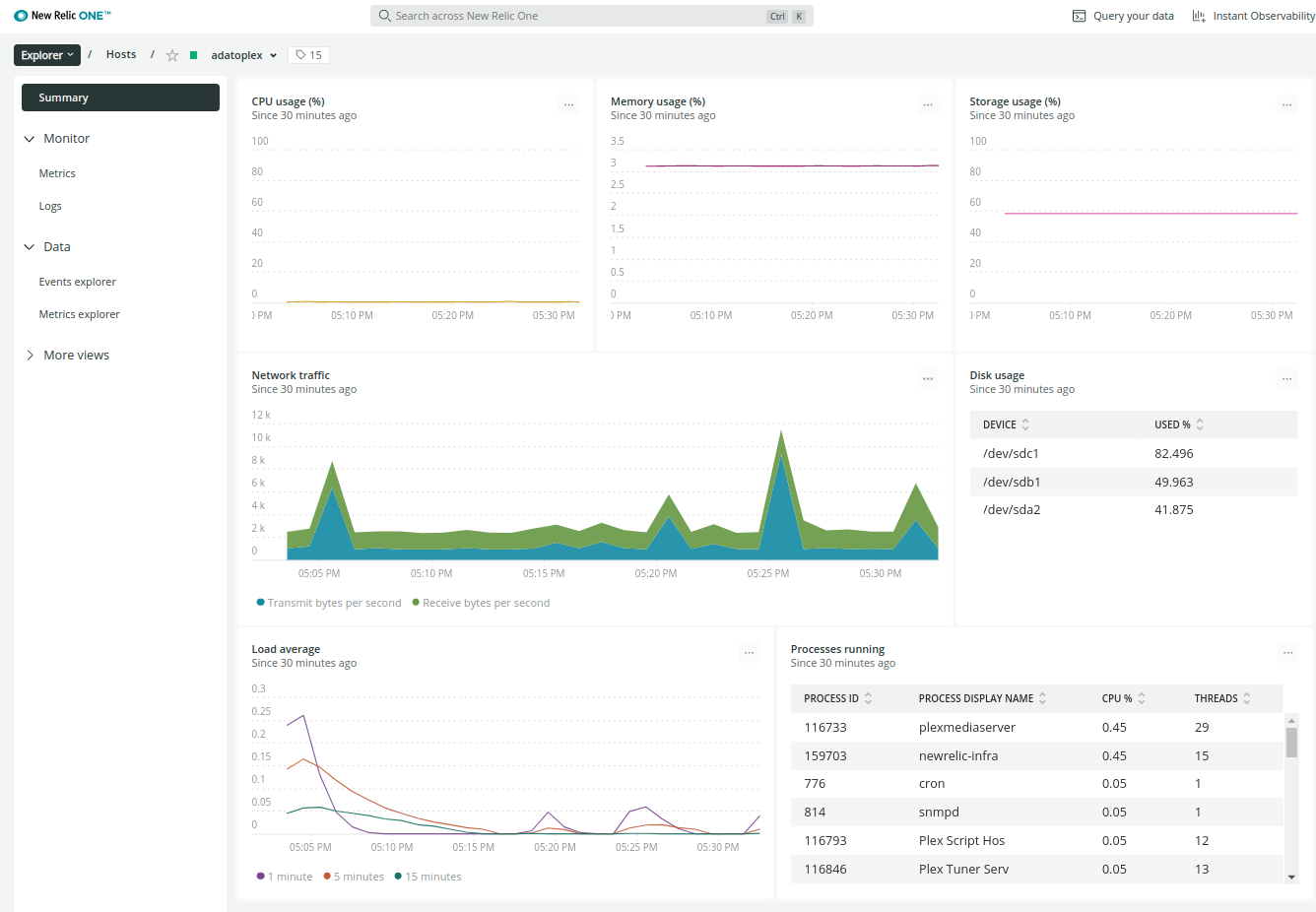
Although the user interface appears to be better than some of its competitors, users find it too difficult to use. The New Relic interface includes numerous internal hyperlinks that move the user from one location to another without the user realizing it.
The significant drawback of this monitoring tool is its pricing, which is not straightforward and varies depending on several factors.
Furthermore, the user interface does not allow you to disable the alert policy. We only need to start and stop individual alerts.
4. Datadog
Datadog is a monitoring and analysis tool used to calculate performance metrics and provide event monitoring capabilities for cloud infrastructure and its services.
With the help of the Azure CLI tool or Azure portal, the Azure environment can be connected to Datadog, enabling users to track the metrics of their Azure virtual machines from the Datadog environment.
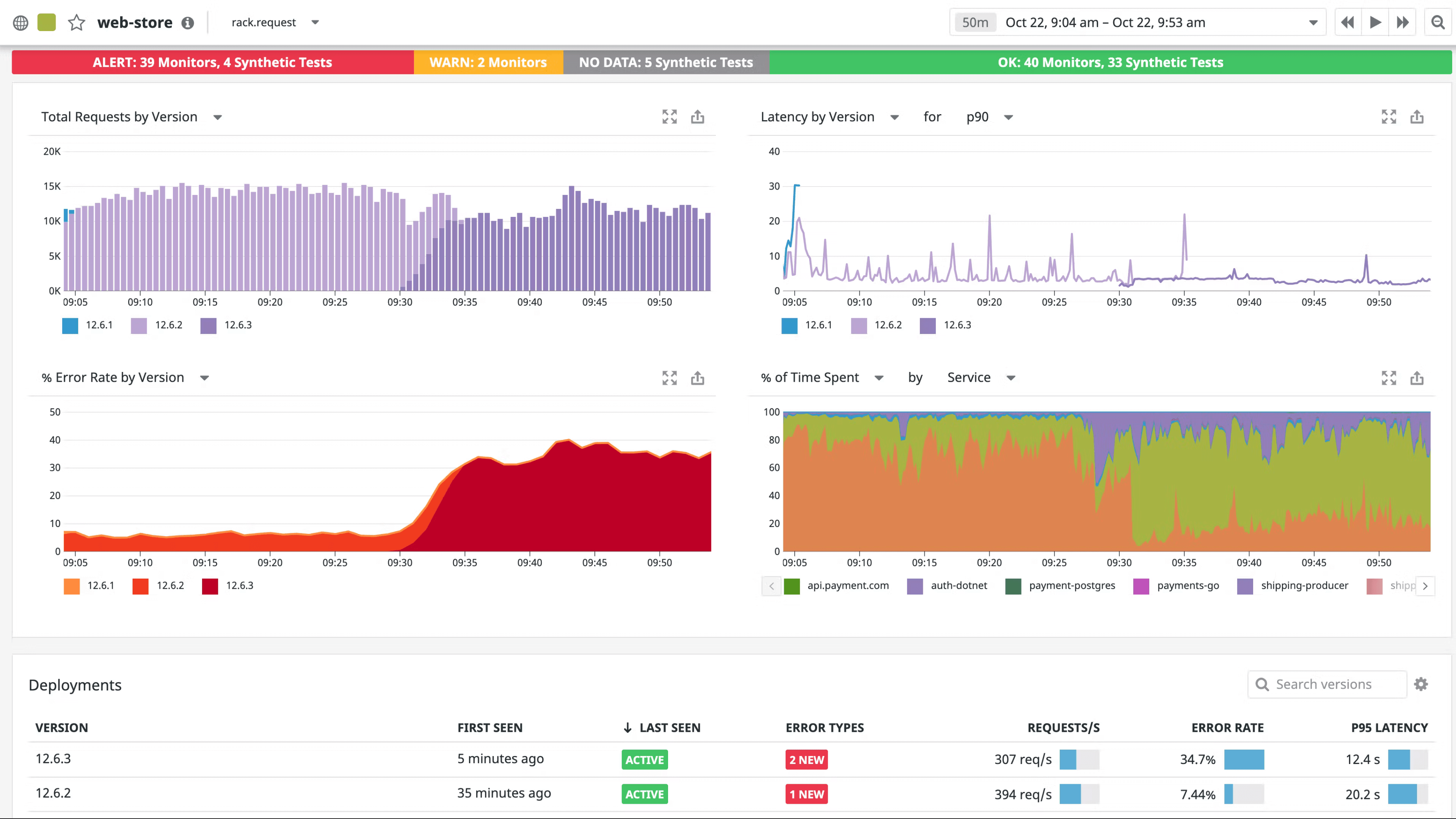
However, we hear that the documentation is not straightforward; therefore, it takes significant time to analyze the product before proceeding with its use. Also, the performance tends to be slow due to multiple application integrations within this software.
The software is too complicated to configure personalized dashboards and metrics and the product is quite expensive in terms of pricing.
5. Microsoft Azure Monitor
Microsoft Azure Monitor is a potent analytics tool used to gather and examine the data from various Azure resources, increasing the availability and performance of your applications.
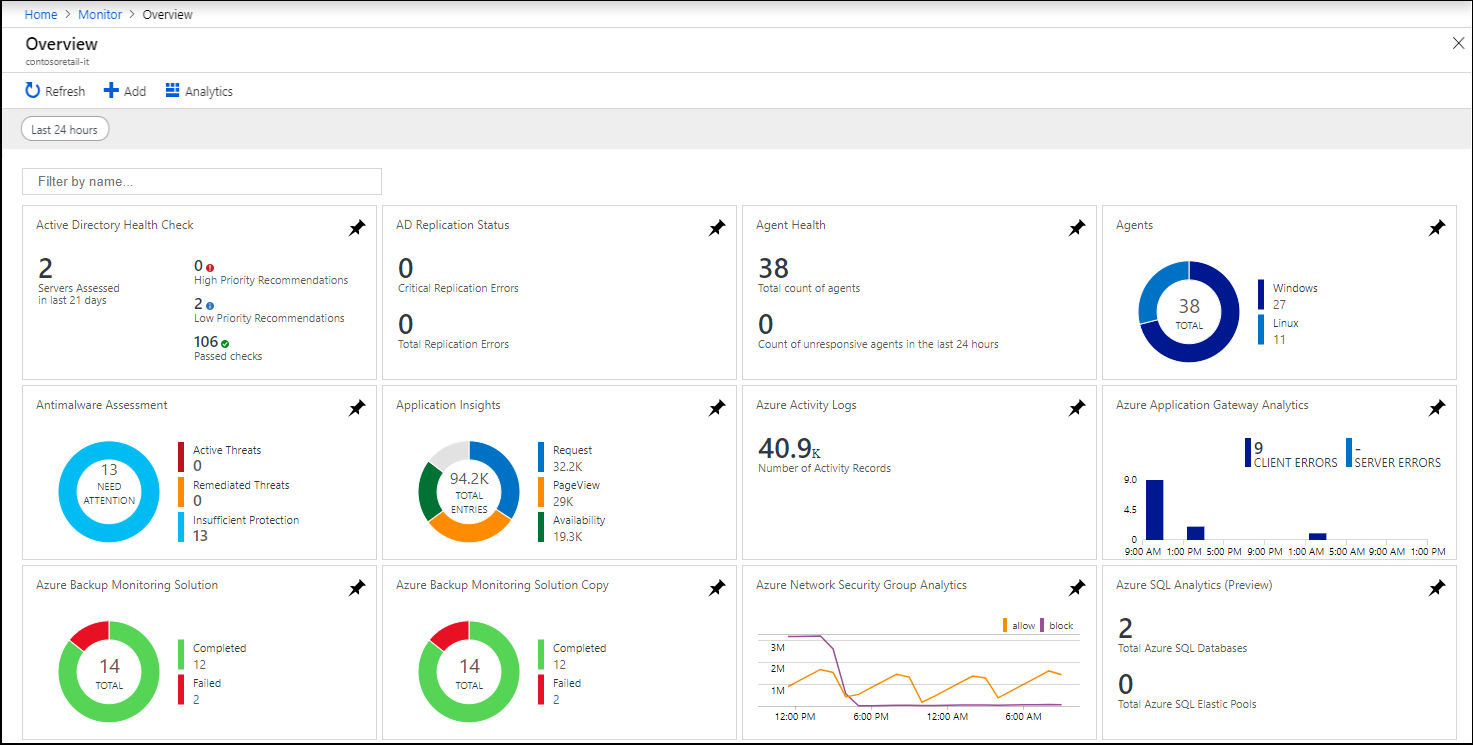
The monitoring is restricted to the resource level; hence, grouping all the resources to be monitored in a single location is impossible. A consolidated monitoring report cannot be generated using Azure Monitor.
Also, platform expertise is required to monitor the Azure resources of your cloud infrastructure effectively.
Considering Azure Monitor and Turbo360? Check out our breakdown: Azure Monitor vs Turbo360.
6. Site 24*7
Site 24×7 is a platform for server monitoring that keeps track of all your metrics, traces, and logs for various cloud architecture layers under a single console.
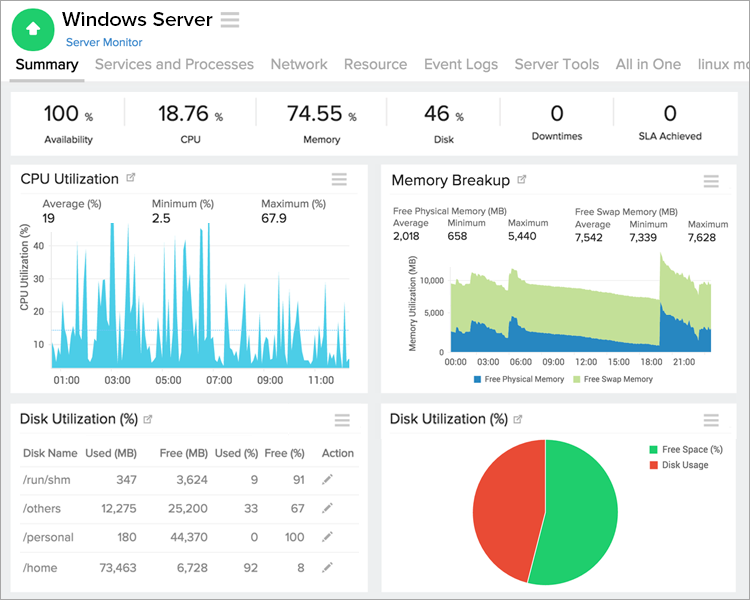
We hear that it’s tough to contact the product’s technical support; connecting to higher-level support is downright tricky. The scalability is poor, and the product is very slow in implementing the latest features. Also, pricing models are not structured properly.
Azure virtual machine monitoring in Turbo360
Turbo360 enables Azure Virtual Machine activities like start, stop, and monitoring support. Your virtual machines can also be scheduled to start up or shut down at specific times.
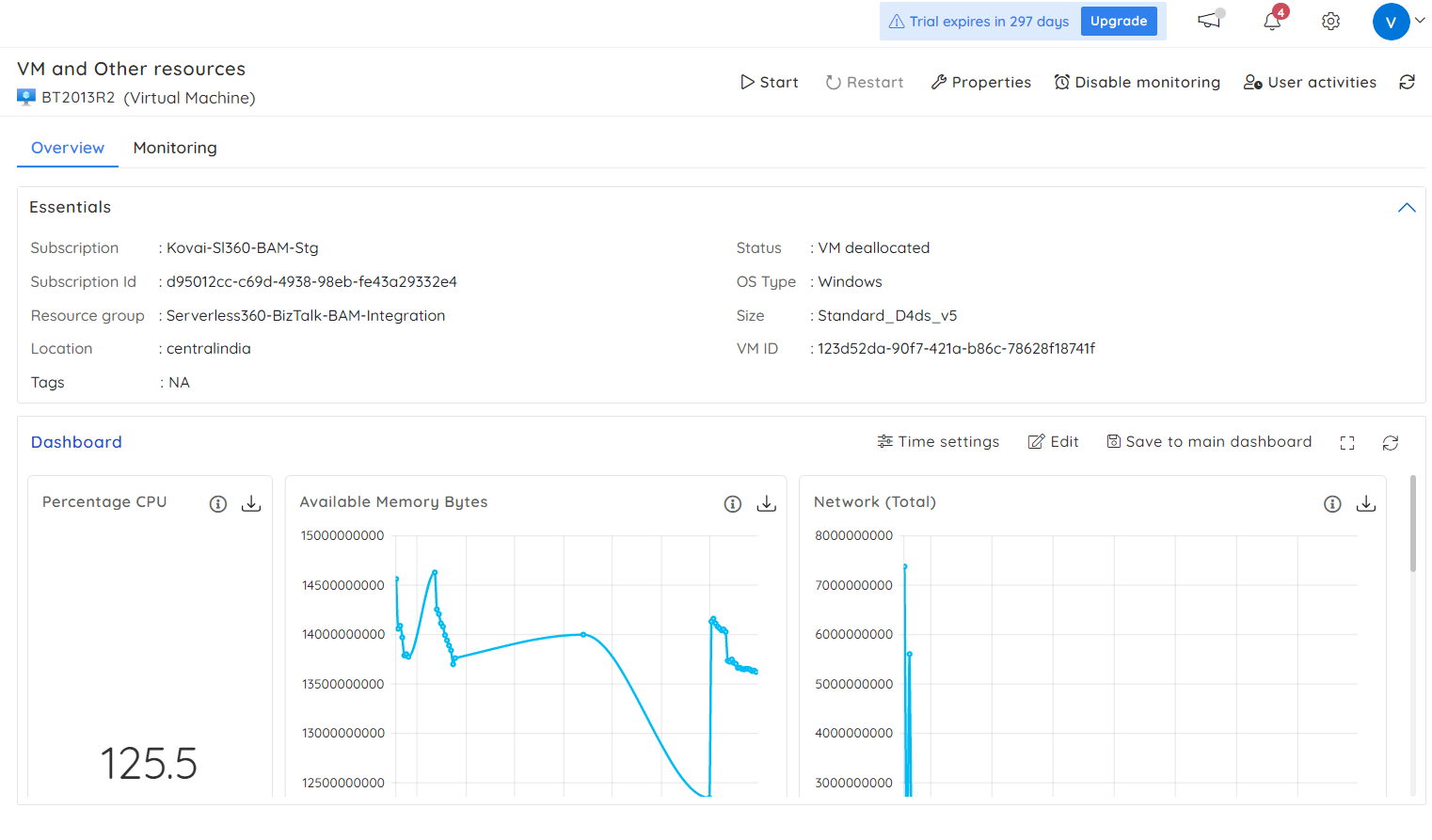
Users can configure any resource metric of a virtual machine with an automated task that should be executed if the metric is violated.
Several monitoring profiles can be mapped to a single virtual machine resource by defining various metrics in each profile to send violation notifications to different teams within a business organization.
Conclusion
Turbo360 is regarded as one of the best cloud management and monitoring platforms, with numerous features that tick all the boxes from a user standpoint. Why wait when you know about a low-cost, high-quality product with features that meet your business needs?
Signup for a free trial to experience the Turbo360 product and check if it meets your needs. Do you want to better understand the product’s capabilities? Our Product Consultant team would love to meet you, explore your requirements, and see if Turbo360 would be a right fit for you.
FAQs
1. What should teams look for in an Azure VM monitoring tool?
Most teams evaluate tools based on ease of use, documentation quality, scalability and support for key VM metrics like CPU, RAM and disk performance. Solutions such as Turbo360 also help by centralizing Azure monitoring and offering clear visualizations.
2. Why do organizations use dedicated tools for Azure VM monitoring?
Native monitoring covers basic resource insights, but teams often adopt tools like Turbo360 when they need consolidated dashboards, alert routing, automation or the ability to group VM resources by applications or business units.
3. How do Azure VM monitoring tools help improve performance?
They track essential VM metrics, highlight bottlenecks and send alerts when thresholds are violated. Platforms such as Turbo360 also allow automated actions like scheduled VM start/stop to reduce waste and maintain performance.
4. What makes multi-VM monitoring easier in large environments?
Centralized dashboards and grouping features help teams monitor several VMs at once. Tools like Turbo360 enable mapping multiple monitoring profiles to one VM and routing alerts to different teams, which simplifies scaling.





